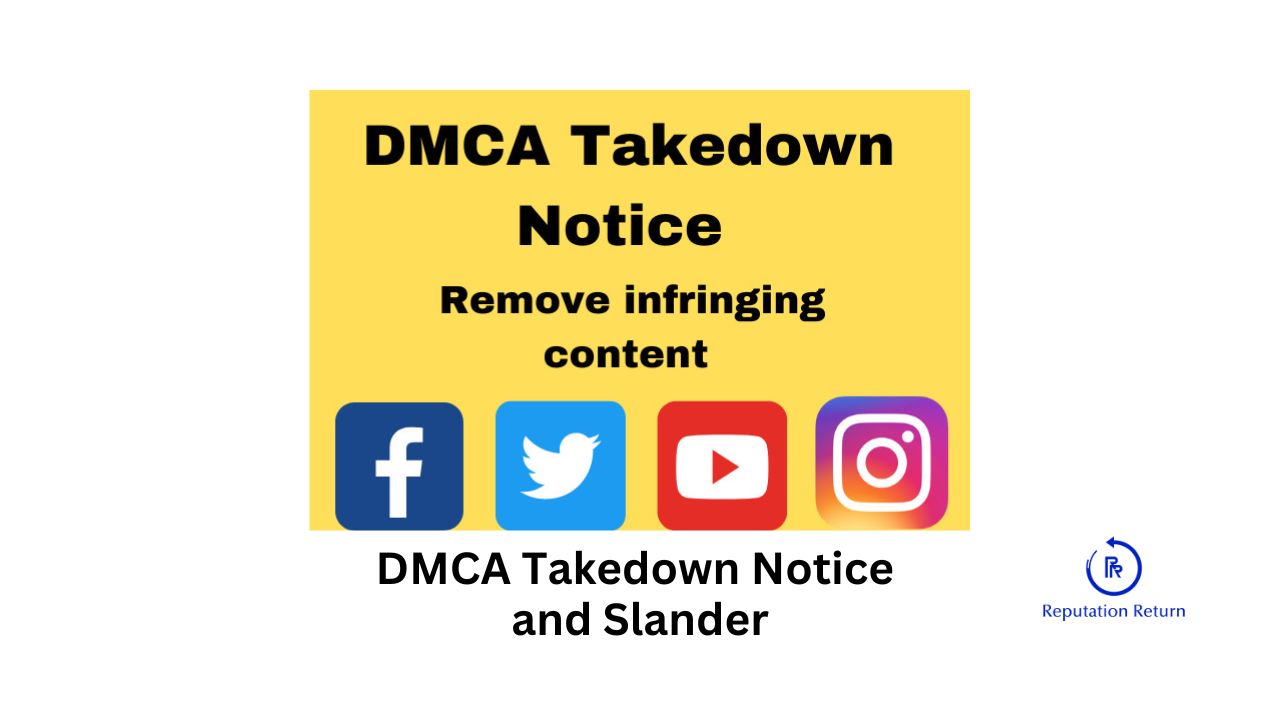Online slander and defamation can have significant repercussions for individuals and businesses. While the primary function of a DMCA (Digital Millennium Copyright Act) takedown notice is to address copyright infringement, it also plays a critical role in mitigating online slander and defamation when the copyrighted content is used to harm someone’s reputation.
Understanding DMCA Takedown Notice Processes
A DMCA takedown notice is a legal request that content hosting platforms, such as websites or social media platforms, remove copyrighted material that has been posted without authorization. For a takedown notice to be effective, it must include:
- Identification of Copyrighted Work: Clearly specify the copyrighted material being infringed.
- Identification of Infringing Material: Provide URLs or other details where the infringing content can be found.
- Contact Information: Include the complainant’s name, address, and phone number.
- Good Faith Statement: Assert that the material is used without authorization and that the notice is made in good faith.
- Statement of Accuracy: Declare that the information provided is accurate under penalty of perjury.
- Signature: Provide an electronic or physical signature.
Connection to Online Slander and Defamation
While DMCA takedown notices are primarily focused on copyright issues, they can be instrumental in cases involving online slander and defamation. Here’s how:
- Defamatory Content Using Copyrighted Materials: Often, defamatory content may include or misuse copyrighted images, videos, or text. For example, if someone uses a copyrighted photo of an individual in a derogatory meme or defamatory video, the original copyright holder can issue a DMCA takedown notice to remove that material. This can help in addressing the defamatory content directly.
- Protecting Intellectual Property from Malicious Use: Defamation often involves the misuse of intellectual property to spread false and harmful statements. For instance, a false and damaging blog post might incorporate copyrighted images or logos to give it a veneer of credibility. By issuing a DMCA takedown, the copyright owner can prompt the removal of these materials, indirectly mitigating the spread of defamatory content.
- Supporting Reputation Management: In some cases, defamatory content might be disguised as legitimate or even falsely attribute statements to copyrighted works. DMCA takedowns can remove these misleading elements, assisting in the broader effort to clear one’s name and protect reputation.
Examples and Case Studies
Consider a scenario where a competitor posts a defamatory article about a business using copyrighted images from the company’s website. By issuing a DMCA takedown notice, the business can have those images removed, making it more challenging for the defamatory article to gain traction. Another example is when personal photos are used in a harmful manner in online forums or social media. A DMCA takedown can assist in removing these images, thus helping to curb the spread of defamation.
While DMCA takedown notices are not a cure-all for online slander and defamation, they are a valuable tool in addressing situations where copyrighted material is used to further harmful agendas. By leveraging the DMCA process, individuals and businesses can not only protect their intellectual property but also support their efforts in managing and repairing their reputations. For comprehensive reputation management and the removal of defamatory content, working with specialized firms like Reputation Return can further assist in mitigating the impact of online slander and ensuring a positive online presence.

